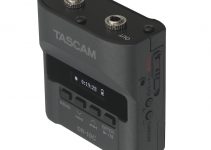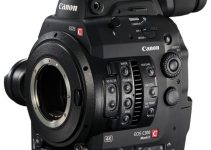In the mid-tier mirrorless camera market, it seems that two particular models have been reigning victorious for quite some time now. At relatively lower prices in comparison to other mirrorless counterparts, the Lumix GH5 and Sony a6500 are highly praised for their ability to offer decent 4K video recording alongside a plethora of other compelling video features in a compact and lightweight package.
While both rivals have gained a decent market share already, the GH5 has a notable advantage with its ability to record internally 4K 10-bit 4:2:2 video over the 8-bit 4:2:0 recording of the a6500, at least on paper. That being said, it would be interesting to found out whether the GH5 10-bit internal recording completely dominates the a6500 when it comes to comparing video quality in some real-world situations.
Indie filmmaker Dave Dugdale of Learning Video has recently made a video comparison that puts both cameras side by side to see if there is a significant difference between the two in that particular regard.
To compare the two mirrorless cameras, Colorado-based filmmaker shot several tests in different lighting scenarios (sunset, bright sunny day, etc.) primarily looking for signs of any noticeable artifacts from either camera. By taking into consideration the superior 10-bit recording, you may reasonably guess that you’ll gain more image data when shooting with the GH5 as the captured footage would be less susceptible to banding than recording in 8-bit. The real world results may surprise you, though.
Overall, the tests showed that it was rather difficult to find any considerable difference between the two rivals, despite the different color depths each camera recorded in. What’s more, it was almost impossible to see any artifacts or banding in either footage when viewing the raw images.
To identify any imperfections, Dave Dugdale resorted to adding heavy grades to the captured videos. This ranged from grading log footage with Rec 709 profiles to simply pushing parameters like contrast, brightness, and color to the extreme.
When looking at the footage from a typical sunny day, for instance, both cameras seemed to perform similarly with little to no visible banding artifacts. The same applies to the test conducted in front of a green screen. Of course, there were a few instances where the Sony’s footage showed signs of image degradation. Nonetheless, these issues can be easily overlooked by the average Joe.
Another test conducted was shooting indoors in an attempt to recover as much data from the highlights in the background of the image. As the pattern would suggest, both cameras performed surprisingly well and showed the same amount of highlight recovery.
An aspect of the test that did yield a bit different results, however, appeared in the videos shot at sunset. In this case, the GH5 recording was seriously challenged while the a6500’s 8-bit footage remained shockingly pristine.
All in all, after viewing all the footage, it’s relatively safe to conclude that there is not much of a difference between the two cameras in terms of image artifacts and banding. Of course, 10-bit 4:2:2 recording has its obvious advantages, but overall it’s nice to see that the inferior 8-bit recording on the Sony a6500 manages to keep up in most (if not all) of the showcased situations.
From an image quality perspective, either camera would suit your filmmaking needs ninety percent of the time, no doubt about it. Dave Dugdale’s video also proves that if you already have an a6500, there isn’t a real necessity to switch to the GH5 just because it can shoot in 10-bit 4:4:2 internally. Again, as with any camera, you may plan on using, it’s important to remember that each device has its strengths and weaknesses in terms of not just image quality, but also ergonomics and workflow. So, knowing the ins and outs of your filmmaking gear should always be at the top of your list.
[source: Dave Dugdale]
Order Links:
Panasonic Lumix DC-GH5 Mirrorless Micro Four Thirds Digital Camera (B&H, Amazon US)
Sony Alpha a6500 Mirrorless Digital Camera (B&H, Amazon US)
Disclaimer: As an Amazon Associate partner and participant in B&H and Adorama Affiliate programmes, we earn a small comission from each purchase made through the affiliate links listed above at no additional cost to you.




If you do heavy grading or film for HLG HDR video, the difference is there. 🙂
The last sunset example shows quite obvious differences! And this is the kind of shot that you may want to adjust in post. So, YES, lots’ of difference.
Even on a 4k monitor from youtube, GH5 footage is with less artifacts.
The comparison is not relevant